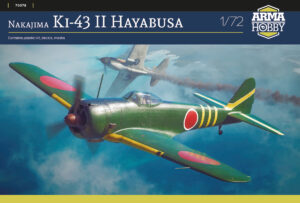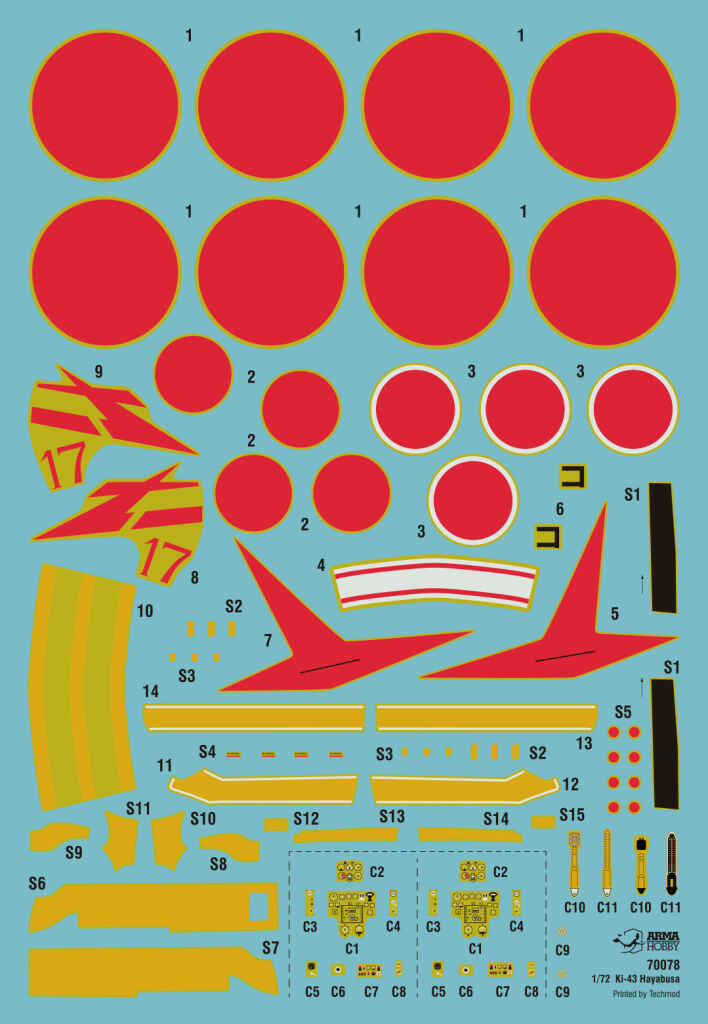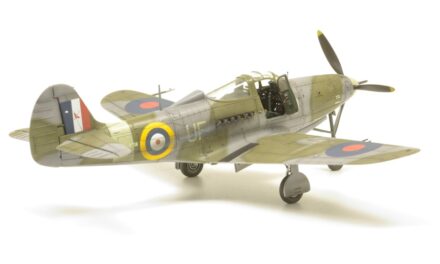
It has been a long journey we travelled with the Arma Hobby team. The kit was designed two years ago and has been patiently waiting in the queue for production. Today I want to talk not only about it, but more about the design process and the queue of new Arma Hobby model kits.
The Ki-43 Hayabusa in 1/72 scale waited for a long time to be released, we had no production capacity in the tooling workshop, the Hurricane II c/b 1/48 project took more than a year. The light at the tunnel appeared with the release of the P-39 in 1/48 scale. The Ki-43 kit managed to be produced in a very short time, but it was not without its moments of horror.
Ki-43 Hayabusa – models built from test sprues – Wojtek Bułhak
Perturbations with the Ki-43
We faced several hurdles before releasing the Ki-43 kit. The first production run arrived just at the beginning of December, a few days after the announced release date. After a quick review of the sprues, it turned out that on all the mouldings, one partt – the top of the engine cover – was defective due to mould damage; the entire batch was unsaleable. This was the moment when we experienced the limit of what was possible, the darkness looked into the soul. Thank God the tooling workshop rose to the occasion and they literally repaired the mould in a few days. Hence the delay in model shipments.
The Ki-43 itself is a stage in our learning of model kit design. The filigree of the aircraft’s design necessarily found its way into the plastic parts. We tested how close we could get to the parameters of the original and where plastic injection technology would offer impassable resistance. Such a place is the rudder. We designed it to scale and it is alsmost ‘paper-thin’. Unfortunately, the resistance of the matter manifested itself in injection difficulties, the plastic did not want to flow to the extremities of such a thin part at the end of the long fuselage, as you saw on the test injections: we had large short-shots here. However, we decided not to thicken parts of the model. After all, the moulds are injected at a higher pressure and there is a flash on the trailing edge of the rudder. You can easily remove it by cutting it off with cutters and gently sanding the edge. Some modelling work needs to be done here, but the filigree of the original has been preserved and the final effect is good. The elevators and wings trailing edges behave better, being thin and without flash.
What do I like this kit for?
I really like the parts in the cockpit, they are fine, and the mounting of the instrument panel and the gunsight is very convenient, almost ‘on click’. Don’t forget to glue it down, as it may fall out during familiarisation flights from the workbench to the shelf in the display case. The canopy is amazing, thin and glossy. It is very nice to assemble the landing gear. Once the covers are glued to the legs (follow the instructions!) the legs+cover assembly fits and holds better than on previous models.
When building the model, make sure you clean the parts well and the assembly will go without problems. The kit has the advantage of a variety of camouflages options and options for sub-variants and ordnance. We were not entirely successful with the option to reproduce the yellow IFF bands on the wing leading edge as a multi-part decal. This surface of the aircraft is so complex that it is probably better to mask it off and paint it, rather than struggle with the decal. But everyone can choose what suits them better. You can find out what the finished model looks like from the articles on our blog.
What’s next at Arma Hobby?
You’ve probably guessed by now that we’re changing a bit this year in the way and pace at which we’re releasing new model kits. We have a number of 1/72 designs awaiting production and we have decided to release them in order of design, disregarding anniversaries of historical events and other external issues. This way, each new kit incorporates the design experience of the previous ones. We don’t want to take shortcuts and we believe that for the better development of our brand, it is better to go down this path one step at a time. The next kit in the design and release queue is the Curtiss H-75, followed by the P-51D Mustang 1/72. These kits are planned for the first half of 2025, and we hope to start pre-orders of the Curtiss this year. That’s not all, however. The next kit is a twin-engine Axis Powers aircraft from World War II. We will reveal the secret on 30 December, two weeks from now.
Check also:
- Buy 1/72 Ki-43 Hayabusa kit online at Armahobby.com!
Modeller happy enough to work in his hobby. Seems to be a quiet Aspie but you were warned. Enjoys talking about modelling, conspiracy theories, Grand Duchy of Lithuania and internet marketing. Co-founder of Arma Hobby. Builds and paints figurines, aeroplane and armour kits, mostly Polish subject and naval aviation.
This post is also available in:
 polski
polski







